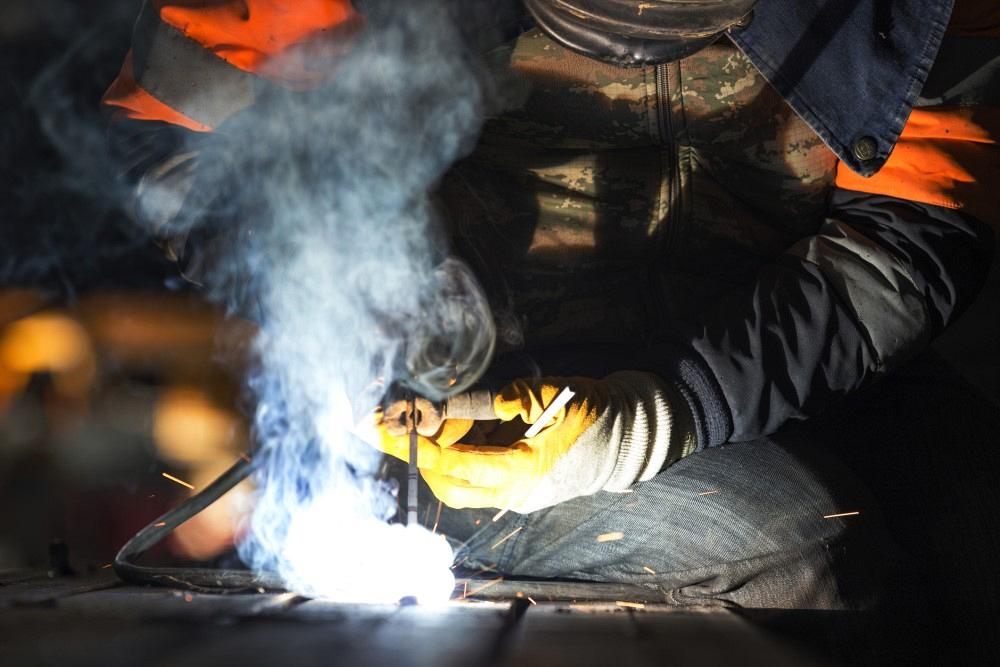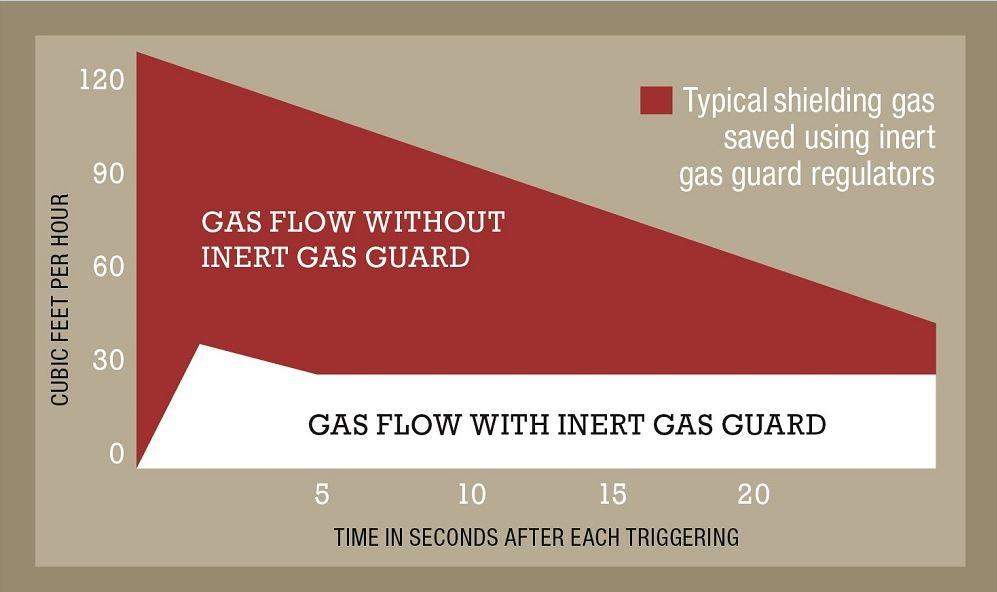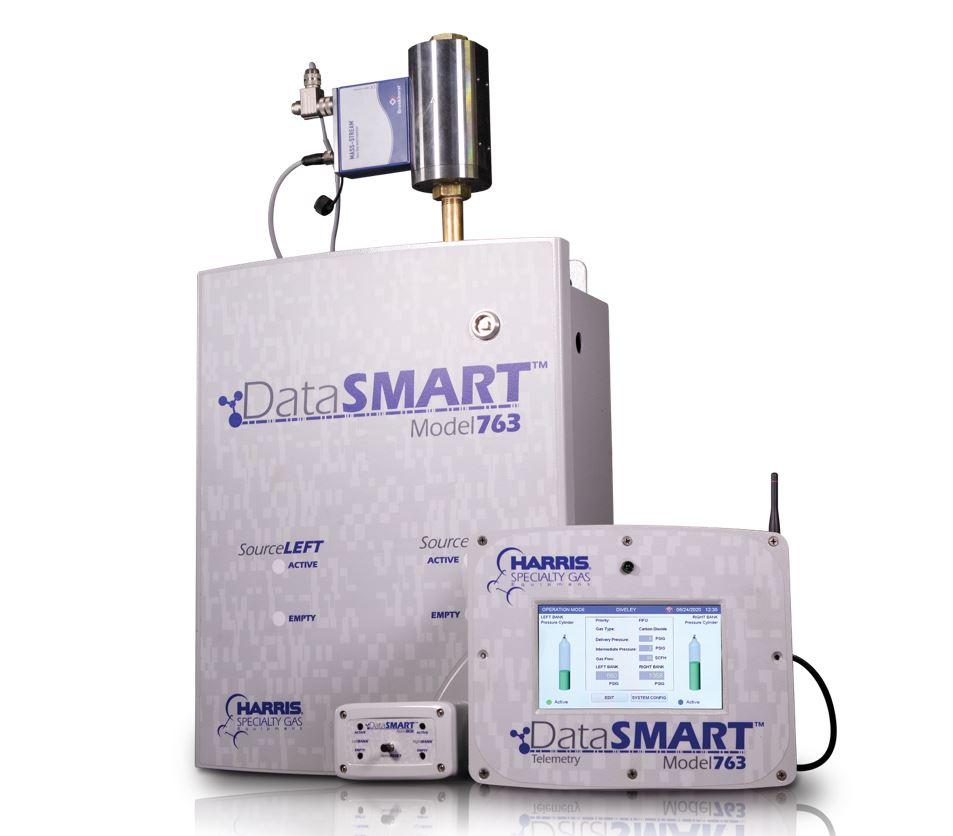Manager of Specialty Gas Products
- FMA
- The Fabricator
- FABTECH
- Canadian Metalworking
Categories
- Additive Manufacturing
- Aluminum Welding
- Arc Welding
- Assembly and Joining
- Automation and Robotics
- Bending and Forming
- Consumables
- Cutting and Weld Prep
- Electric Vehicles
- En Español
- Finishing
- Hydroforming
- Laser Cutting
- Laser Welding
- Machining
- Manufacturing Software
- Materials Handling
- Metals/Materials
- Oxyfuel Cutting
- Plasma Cutting
- Power Tools
- Punching and Other Holemaking
- Roll Forming
- Safety
- Sawing
- Shearing
- Shop Management
- Testing and Measuring
- Tube and Pipe Fabrication
- Tube and Pipe Production
- Waterjet Cutting
Industry Directory
Webcasts
Podcasts
FAB 40
Advertise
Subscribe
Account Login
Search
How to reduce shielding gas costs without compromising weld quality
Here are 5 tips on how welders can save money and maintain quality with smart investments
- By David Gailey
- August 18, 2022
- Article
- Consumables
Shielding gases are typically one of the largest expenditures that companies make to support their welding operations. But companies cannot forego this expense as shielding gases protect the weld area from exposure to atmospheric contamination that can weaken the weld joint.
That’s why, when looking at ways to minimize the cost of shielding gases, it’s critical that you don’t compromise the quality of the welding process. A small investment in proper gas equipment can provide significant savings without sacrificing welding quality.
No. 1: Know How Much Gas Is Wasted
The first step is to analyze each specific welding process and set benchmarks. Precisely determine the amount of gas you need to make an adequate weld. This is crucial to finding out where gas is wasted in your operations—you might be surprised to find out how much gas you waste with an improperly set flow rate.
Companies who set gas usage benchmarks likely will discover they waste too much shielding gas in their processes. Once you’ve determined that there is waste within the process, the next step is pinpointing and eliminating it.
No. 2: Reduce Gas Surge
Surges occur every time you pull the trigger on the welding torch. Most shielding gas flow control equipment, whether from a cylinder or a pipeline, is designed to operate at pressures of about 20 to 30 pounds per square inch gauge (PSIG), while applications using pure CO2 may operate at pressures up to 50 PSIG. Every time you activate the torch trigger, an upstream pressure of 20, 30, or even 50 PSIG exits the welding nozzle, wasting a large amount of gas.
Gas guard regulators, point-of-use orifices, low-pressure flowmeters, and surge-reducing hoses are some of the devices that significantly reduce the amount of shielding gas surge during trigger pulls (see Figure 1). These flow-control accessories reduce or prevent excessive flow rates that make the gas turbulent and draw oxides and nitrides into the weld.
The most effective way to eliminate shielding gas surge is to introduce a pressure-regulating device into the gas system. Be wary of using inline-restricted orifices as a device to save on shielding gas. If they are not installed at the correct point in the gas stream, these devices will not have the desired effect in eliminating gas surge.
Point-of-use orifice fittings can work well and generally are a low-cost solution. However, to work properly, the orifice fittings must be installed precisely in front of the solenoid valve. If it is installed anywhere else in the gas stream, such as at the regulator or the flowmeter, the surge problem will remain. In contrast, a gas-reducing regulator can be placed anywhere in the gas stream and work effectively by taking the high upstream pressure and reducing it to eliminate the surge. When the solenoid valve opens, there will not be the usual high upstream pressure; instead of 50 PSIG, there is roughly 10 PSIG of line pressure.
Zero-compensated shielding gas flowmeters, which are calibrated at atmospheric pressure (zero PSIG), release the flow of shielding gas with no back pressure whatsoever. When the solenoid opens, there is no wasteful back pressure to create the surge (see Figure 2).
Low-pressure-compensated devices work well for a system with newer welding leads or for a new installation. Older equipment might have kinks or other clogs in the line, and you will need the excess shielding gas pressure to clear out imperfections.
These devices, though, may not be ideal for applications at construction sites, fab shops, or wherever equipment is handled roughly and maintained improperly.
No. 3: Blend Gases On-Site
Traditionally, welders use pure argon or a mixture of argon and CO2—delivered pre-blended in a cylinder—when MIG welding. As welding has evolved, the techniques have become more specialized with specific blends of argon and CO2 required to achieve the desired results. Keeping in mind that many applications may require a different blend for different jobs, you may want the flexibility to change the mixture to best suit different applications. With a gas blender, gas mixtures can be changed easily. As a result, companies can avoid purchasing multiple pre-blended cylinders, which minimizes costs and streamlines their gas purchasing process.
Gas blenders can cost anywhere from $1,000 to $10,000, so determining the ROI is important. If you have just a handful of welding stations, a modest investment of around $1,500 likely will suit your blending needs. For 28 welding stations, for example, the investment may be closer to $7,000.
An expensive gas blender might not be a good investment for a trade school or other settings where every welding booth uses the same gas blend. In cases like these, it may be beneficial to continue using packaged gas in pre-mixed cylinders. Examine your processes, workflow, and supply chain to determine whether a gas blender is right for you.
No. 4: Install a Continuous Gas Supply to Reduce Downtime, Increase Productivity
It is estimated that more than 50% of the welding market uses packaged gas. It could be advantageous for these companies to invest in a continuous gas system that never shuts down.
Every minute of downtime is extremely expensive. If you are using packaged gases, changing cylinders becomes an in-house job, and profitability drops during the time it takes to change a cylinder. How long does it take to change a cylinder? How much money does that cost? It can add up over time.
An automatic changeover manifold system seamlessly switches over to the reserve source when a primary cylinder reaches a predetermined level of depletion, leaving plenty of time to replace the empty cylinder without stopping the process.
Fully automatic changeover manifold systems are becoming very popular and have proven to be an ideal solution for high-pressure cylinders, liquid dewars, and bulk systems requiring a packaged gas backup. A manifold can be attached so that the bulk system is always primary but with a reserve source comprising six or 12 high-pressure cylinders.
Such systems can help high-production companies avoid downtime. New technology is enhancing the capabilities of these automatic changeover manifold systems, such as in-depth efficiency and usage data analysis and email or text alerts when gas levels are low (see Figure 3). Some data systems include a mass flowmeter that determines gas usage by measuring the gas molecules consumed during the process.
Connected systems prevent waste by monitoring cylinders or cylinder banks to determine whether they need to be changed over to the reserve cylinder and by helping users to program and adjust changeover pressure settings easily. This can potentially maximize gas usage and avoid sending cylinders back to suppliers with usable gas left over.

FIGURE 2. A typical flowmeter regulator is a fixed pressure/variable orifice device. Pressure is set at the factory to a compensated or calibrated level, depending on the flow range desired and the gases being used.
No. 5: Talk to Your Gas Equipment Manufacturer, Supplier
Your gas distributor and gas equipment manufacturer are great resources to help you maximize shielding gas usage. Rely on their expertise to determine the best path forward for spending less on shielding gas.
Eliminating inefficiencies in your welding process and shielding gas system can result in cost savings and a better ROI. By analyzing the data, you may be surprised to learn how much you spend on shielding gas annually. If you do not have sufficient gas-saving protocols in place, an investment based on your unique needs could be a potentially massive windfall for you. There are many options out there, so take advantage of the data that can help you find a solution that maximizes your efficiency and output.
About the Author
David Gailey
2345 Murphy Blvd.
Gainesville, GA 30501
678-928-3801
About the Publication
Related Companies
subscribe now

The Welder, formerly known as Practical Welding Today, is a showcase of the real people who make the products we use and work with every day. This magazine has served the welding community in North America well for more than 20 years.
start your free subscription- Stay connected from anywhere

Easily access valuable industry resources now with full access to the digital edition of The Fabricator.

Easily access valuable industry resources now with full access to the digital edition of The Welder.

Easily access valuable industry resources now with full access to the digital edition of The Tube and Pipe Journal.
- Podcasting
- Podcast:
- The Fabricator Podcast
- Published:
- 04/16/2024
- Running Time:
- 63:29
In this episode of The Fabricator Podcast, Caleb Chamberlain, co-founder and CEO of OSH Cut, discusses his company’s...
- Trending Articles
Sheffield Forgemasters makes global leap in welding technology

Welding student from Utah to represent the U.S. at WorldSkills 2024

Lincoln Electric announces executive appointments

Lincoln Electric acquires RedViking

Engine-driven welding machines include integrated air compressors

- Industry Events
16th Annual Safety Conference
- April 30 - May 1, 2024
- Elgin,
Pipe and Tube Conference
- May 21 - 22, 2024
- Omaha, NE
World-Class Roll Forming Workshop
- June 5 - 6, 2024
- Louisville, KY
Advanced Laser Application Workshop
- June 25 - 27, 2024
- Novi, MI





























